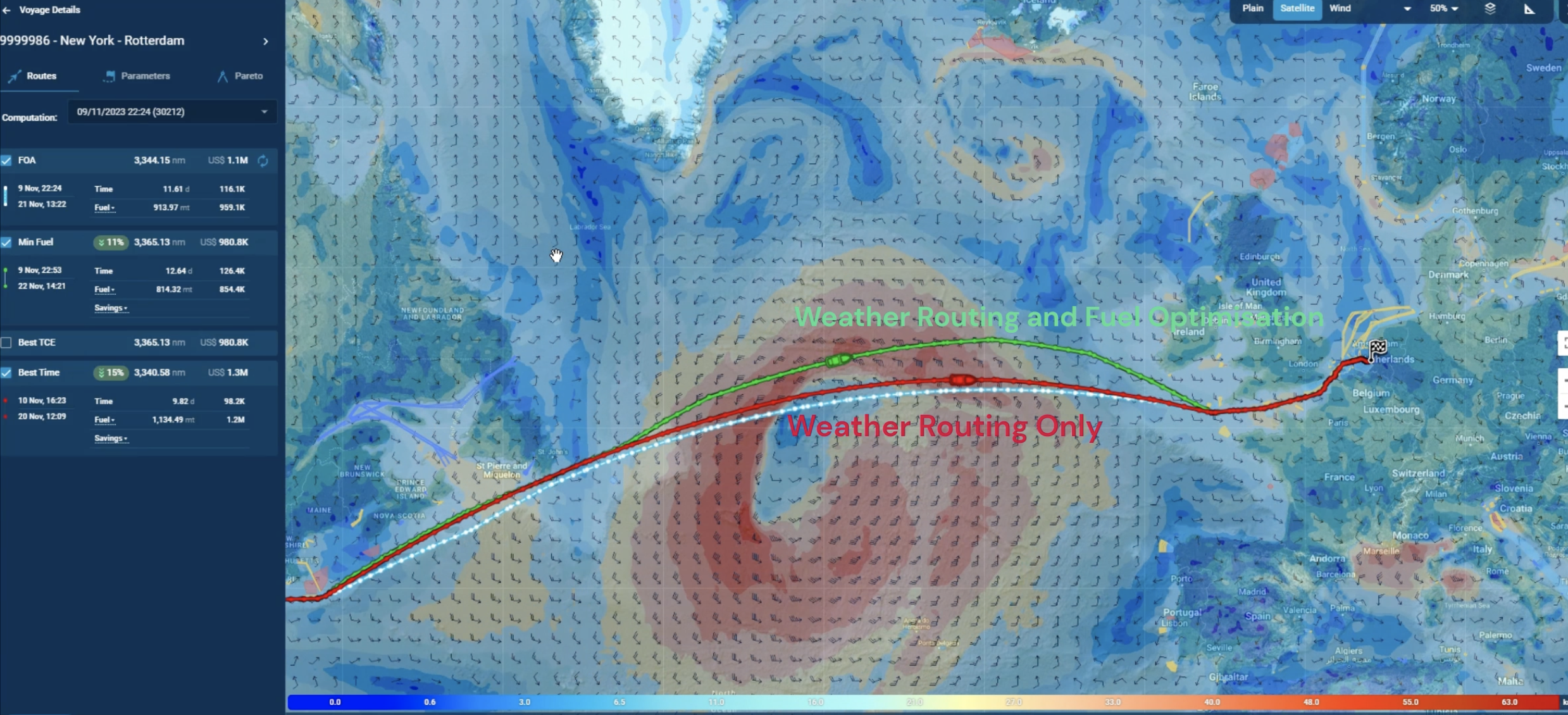
The dynamic interplay between technology and market-demands influence progress across the maritime sector. Adapting best-in-class technologies to adhere to current regulatory frameworks is no longer a luxury, it is imperative. As CO2 emissions increase across Shipping, digital optimisation providers are promising solutions with significant benefits going beyond traditional weather routing. Let us take a closer look at some of the most urgent challenges and available technologies within this sector.
The need for comprehensive voyage optimisation has never been more evident. Stakes have elevated since weather routing was considered a revolutionary technology. A recent IMO study indicates that ETD, ETA, and TCE also impact sustainability. As fuel prices rise and environmental considerations take center stage, focus sharpens on holistic solutions. As Statista notes in their recent report: "International shipping emissions had a year-on-year growth of 4.9 per cent in 2021, rising to approximately 700 million metric tons of carbon dioxide (MtCO₂). This was higher than 2019 and accounted for roughly 11 per cent of total global transportation CO₂ emissions that year.”
This sobering statistic highlights that adopted technologies are no longer capable of providing the necessary emission reductions.
As the name implies, weather routing focuses only on weather in the optimisation process. Since every knot and nautical mile impacts efficiency, safety, and sustainability, such limited approach is no longer sufficient.
This technology was followed by the introduction of Weather/Voyage Optimisation to the market, a solution that had intended to transcend weather-centric strategies. Still widely used, it carries out its voyage computations based on a single objective, incapable of considering alternative inputs simultaneously. Despite the market bustling with voyage optimisation providers promising to improve efficiencies on multiple levels, most solutions - much like weather routing - focus only on a single objective or output. From a technical standpoint, not considering multiple objectives simultaneously is a reductive approach and no longer capable of meeting market requirements.
A further issue to address is the absence of comprehensive regulations on the market. The need for International Maritime Organisation (IMO) regulations is clear as most ‘voyage/weather optimisation solutions are unable to provide the necessary emission reductions .
TheIMO could lead the creation of a set of minimum performance standards, addressing the optimisation engine itself, the quality of ship hydrodynamic models and the accuracy and resolution of weather forecast data and metocean parameters.
With Multi-Objective Voyage Optimisation comes the quantum leap beyond the single-dimensional approach of optimisation solutions. This latest technology effectively considers a suite of variables, recognising that modern vessels navigate not only through weather systems but through a complex matrix of operational challenges. This approach, rooted in next-generation artificial intelligence brings a new chapter for voyage optimisation - aligning maritime operations with market demands. T-VOS, the first Multi-Objective Voyage Optimisation Solution for Shipping, is at the forefront of this evolution. T-VOS integrates with both high-resolution Met-Ocean forecast data and ship hydrodynamics models with innovative genetic algorithms, ensuring a comprehensive approach to modern maritime challenges. This unlocks otherwise hidden values, revealing efficiency, safety, and profitability in equal measure.
At Theyr, we provide solutions towards a more sustainable and profitable future. By comprehensively considering multiple operational parameters, T-VOS transcends the limitations of weather routing. This approach results in sustainability, cost-effectiveness, and safety for all optimised voyages. T-VOS emerges as The indispensable technology, aligning seamlessly with the evolving needs and expectations of maritime.